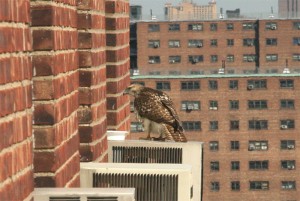Black Rock City denizens quickly learn not to take their city for granted. A theme camp, art project, or landmark might be here one day and gone the next, disorienting those who rely upon such markers to return to their home camp. (A few may give up and choose to snooze elsewhere for the night.)
During a construction boom, cities like New York City also are characterized by transience. An empty lot or new construction often generates some head-scratching about what existed in that spot weeks or months before. Sometimes the changes are inexplicable, like the addition of a store devoted to plastic shoes to a historic townhouse. Preservationists still mourn the replacement of buildings like Penn Station.
For more changes in Manhattan, such as the conversion of Fifth Ave. from stately residential homes to stores/office buildings, see Max Page’s The Creative Destruction of Manhattan, 1900-1940 (1999, University of Chicago Press). For perspective on more recent changes, see Sharon Zukin’s Naked City: The Death and Life of Authentic Urban Places (2010, Oxford University Press).

